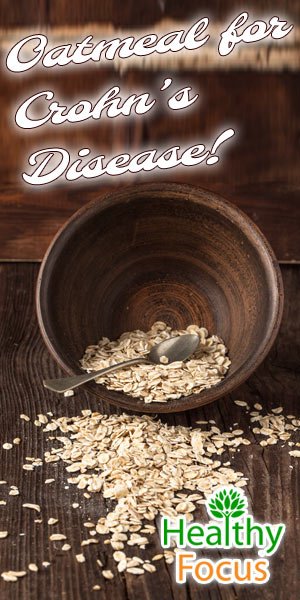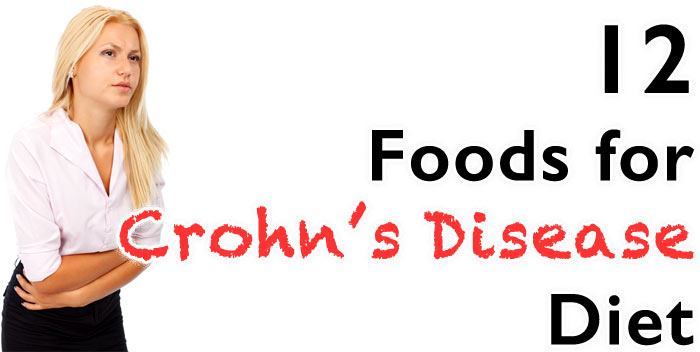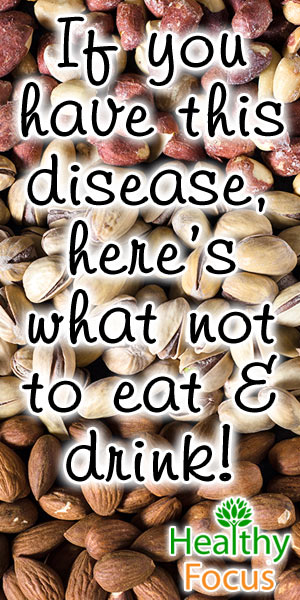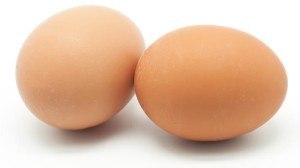Last Updated on December 9, 2017 by Marc Seward
Crohn’s Disease Diet
People suffering from Crohn’s disease have probably found that certain types of food can trigger their symptoms especially during a flare up. Avoiding the food which causes these intestinal symptoms and making sure to eat the right stuff may protect against adverse reactions and pave the way to better intestinal health.
What is Crohn’s disease?
Crohn’s disease is an inflammatory bowel disease otherwise known as IBD. It is a similar condition to ulcerative colitis and both diseases are characterized by an immune reaction to the intestinal tract.
Unlike ulcerative colitis which only affects the colon, Crohn’s disease also attacks and causes inflammation to the small intestine which makes it difficult for sufferers to digest and also to absorb important nutrients from their food. Coupled with a loss of appetite, this lack of nutrients can lead to severe malnutrition and anemia for those afflicted.
Symptoms of Crohn’s disease
The symptoms of the disease can range from moderate to severe and the type of symptoms experienced depend largely on which area of the gastric tract is affected. Symptoms tend to occur intermittently during flare ups.
The most common symptoms of the disease include the following:
- Abdominal cramps
- Fatigue
- Fever
- A lack of appetite
- The sensation that you need to pass a stool even when your bowels are empty.
- Weight loss
- Diarrhea which is usually watery and occasionally contains blood.
Other less common symptoms can include the following:
- Swelling and sores in eyes
- Constipation
- Painful joints and swelling
- Oral ulcers and swollen gums
- Rectal bleeding
A diet for Crohn’s disease
As well as medication, you can go a long way towards controlling your illness by adapting your diet. It is important not only to eat well and often in order to avoid malnourishment but also to avoid the food and drink which causes flare-ups.
Not everybody will have the same triggers but the following are foods that are commonly linked to flare ups and should be avoided for the most part. With some trial and error you should be able to find out which of these foods are aggravating your symptoms and then eliminate them from your diet.
Food and drink to avoid
- Alcohol
- Carbonated drinks
- Raw fruit and vegetables
- Nuts and seed
- Food which causes gas such as legumes and beans and certain vegetables.
- Corn husk
- Tea and coffee
- Mayonnaise, oil and butter
- Fatty fried food
- Spicy food
- Red meat
- Bran and whole grain food
Having identified which food is causing your flare ups, you may decide to avoid them completely or find alternative ways to prepare them. For example, if you find raw vegetables are triggering your symptoms, you could try steaming them or lightly boiling them rather than giving them up entirely.
Equally it is important to eat a high protein diet so eating fish and poultry might be a good alternative to red meats but make sure that your chosen meat is on the lean side.
Because of the difficulty that sufferers have in absorbing sufficient nutrients, it is very important to adopt a high calorie and high protein diet and to maintain this even when you have no desire for food.
Experts recommend that you eat regular daily meals as well as 2 or 3 additional snacks throughout the day in order to get sufficient calories, nutrients and proteins. Experts also tend to recommend nutritional supplements in the form of vitamin and mineral supplementation.
The Best food for Chron’s disease
Just because your intake is limited, doesn’t mean you can’t enjoy a varied tasty diet. There are many foods that sufferers and experts recommend that can be used to prepare tasty meals and snacks throughout the day.
1. Eggs
Eggs are a great source of tasty protein that can be prepared in a number of delicious healthy ways. They are also cheap and easy to prepare quickly whether you choose to scramble, poach or boil them.
My favorite breakfast is scrambled eggs and smoked salmon on toast and with salmon being another excellent option for Chron’s disease sufferers, it is worth trying.
2. Almond milk
Because Crohn’s disease often goes hand in hand with lactose intolerance, almond milk makes a great tasty alternative to regular milk. It is made from ground almonds and contains just as much calcium as milk but none of the cholesterol. It is also an excellent source of Vitamins D and E and in its unsweetened form contains only 20 calories a serving.
3. Oatmeal
Oatmeal is another great breakfast option if you suffer from this disease. Oatmeal contains soluble fiber which is easier to digest than the insoluble type. The insoluble variety of fiber found in fruit and veg can make your symptoms worse and cause diarrhea. Starting your day off with a bowl of nutritious oatmeal may help with your symptoms.
4. Vegetable soup
Although many people with Crohn’s disease prefer to steer entirely clear of vegetables, you need not avoid them entirely. You can either puree them or blend them into a healthy nutritious soup. A variety of vegetables can be used for this purpose including carrots, squash and pumpkins.
5. Salmon and other seafood
Experts recommend that some 25% of your calorific intake should be made up of proteins. Lean proteins found in fish like salmon and other healthy sea food options are one of the best ways to get your daily dose of protein.
Fish is also beneficial because it is so high in omega-3 fatty acid. As well as salmon, white fish such as flounder and tilapia are easily digested and absorbed. You should try boiling and grilling your fish rather than frying in order to get the best results.
6. Lean poultry
While red meat and pork are a bad idea, lean poultry is an excellent alternative. Boiled and grilled skinless chicken and turkey will ensure you are getting the proteins you require.
7. Pureed chickpeas
I have always loved hummus and even though beans are one of the foods to be avoided for Crohn’s sufferers, when pureed they are generally considered safe for sufferers of the illness. They are an excellent source of protein and important nutrients. Lentils can also be pureed as an alternative.
8. Papaya and other fruit
If you have Crohn’s disease, you need not skip the fruit totally. Tropical fruit like papaya, bananas and mangoes are nutritionally rich and easily digestible. Papaya contains an enzyme known as papain which helps the body to digest proteins effectively as well as vitamins A and C and potassium.
Avocado is another excellent option being full of healthy fats, vitamins and minerals like potassium. Unlike most fruit, avocado is made of soluble fiber and is easier to digest for those with the disease.
9. Butter lettuce
If you are missing your salads, then butter lettuce is a great option to add variety to your dinner plate. Experts in the field recommend this tender green lettuce as long as you are not in the middle of a flare up and suffering serious diarrhea.
10. Roasted pepper
Another salad style option is to roast a red pepper and peel off the skin. They are both nutritious and absolutely delicious and can be used to make salad or as an attractive soup garnish. However, be careful as peppers can trigger flare ups in some people.
11. Rice
White rice may not be terribly nutritious but it is easy on the stomach and provides a healthy amount of calories.
12. Nut butters
Because nuts are such a healthy source of fats, proteins and vitamins, it is a shame that many people with Chron’s cannot tolerate them. One option is to choose a smooth buttered nut variety such as peanut, cashew or almond butter.



Leave a Reply
You must be logged in to post a comment.